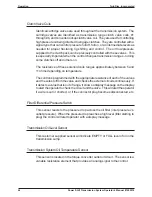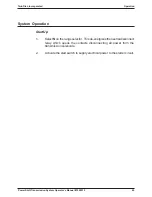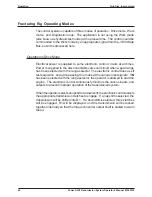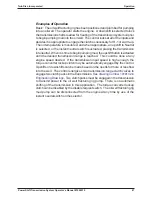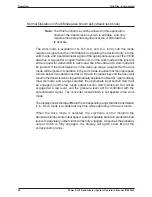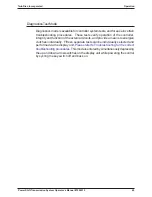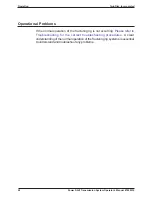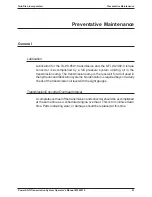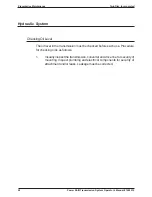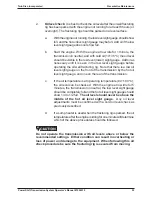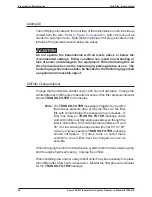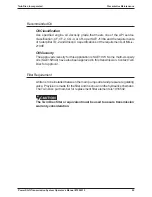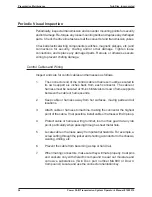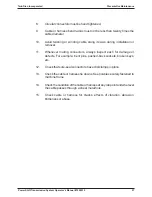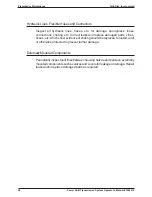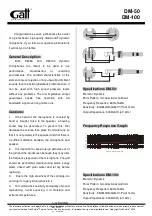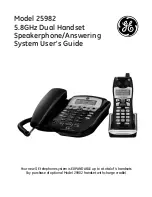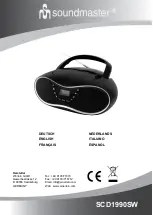
43
Twin Disc, Incorporated
Operation
Power Shift Transmission System Operator’s Manual #1020510
Speed Sensors
A voltage signal is generated as each tooth of a gear moves past the sensor.
This results in an ac voltage signal with a frequency determined by the frequency
of a tooth passing the sensor. The control is programmed with the number of
teeth on the gear under the sensor and converts the frequency of pulses to
determine gear/shaft RPM. The input speed sensor is calibrated to measure
torque converter output speed (equals transmission input speed). The sensor
is mounted on the left front side of the transmission (when viewed from the
rear). The output speed sensor measures output speed of the transmission.
The control uses the input and output speed information when determining
transmission range, engagement of the lockup clutch, and work mode functions.
Resistance of the sensors is approximately 1100 ohms. The control does not
measure the voltage of the speed sensor signals; it only uses the frequency of
the pulses. The amplitude (voltage) of the signal is determined by the velocity
of the gear tooth as it passes the sensor and the gap between the gear tooth
and the end of the sensor. The sensor must be close to the gear to generate a
signal that is large enough to reach the control where the frequency is measured.
Measuring the voltage of the speed sensor signal would only be useful for
verifying that the sensor is generating a signal.
The control checks resistance of speed sensor circuits frequently. If the value
is found to be out of range, a display message is shown on the display to alert
the operator. This could indicate a fault in a wire to the sensor or in the sensor
itself. The control also calculates what range is engaged based on what
solenoids are energized and the transmission ratio. It alerts the operator if it
does not receive a frequency signal from one of the sensors when it expects to
see a signal. For example, the control will show a display message if it sees a
signal indicating output speed, a range is engaged, and it sees no signal from
the turbine/transmission input speed sensor.
Display
The dot matrix liquid crystal display (LCD) is usually installed on the control
panel for the oil fracturing rig. It indicates the transmission range that the control
has engaged. It is also used to inform the operator if the control has detected a
fault in one of the external circuits, and is used during the diagnostics test to
communicate with the operator. Two membrane switches are housed in the
display for diagnostic purposes. The diagnostic test mode is entered by
simultaneously depressing these up and down arrow buttons while cycling
power to the control via the key switch.
Summary of Contents for TA-90-8501
Page 3: ...Document Number 1020510 Revison 1 May 2002 Power Shift Transmission System Operator s Manual ...
Page 4: ......
Page 133: ......
Page 134: ......
Page 135: ......
Page 136: ......
Page 137: ......
Page 138: ......
Page 139: ......
Page 140: ......
Page 141: ......
Page 142: ......
Page 143: ......
Page 144: ......
Page 145: ......
Page 146: ......
Page 147: ......
Page 148: ......
Page 149: ......
Page 150: ......
Page 151: ......
















